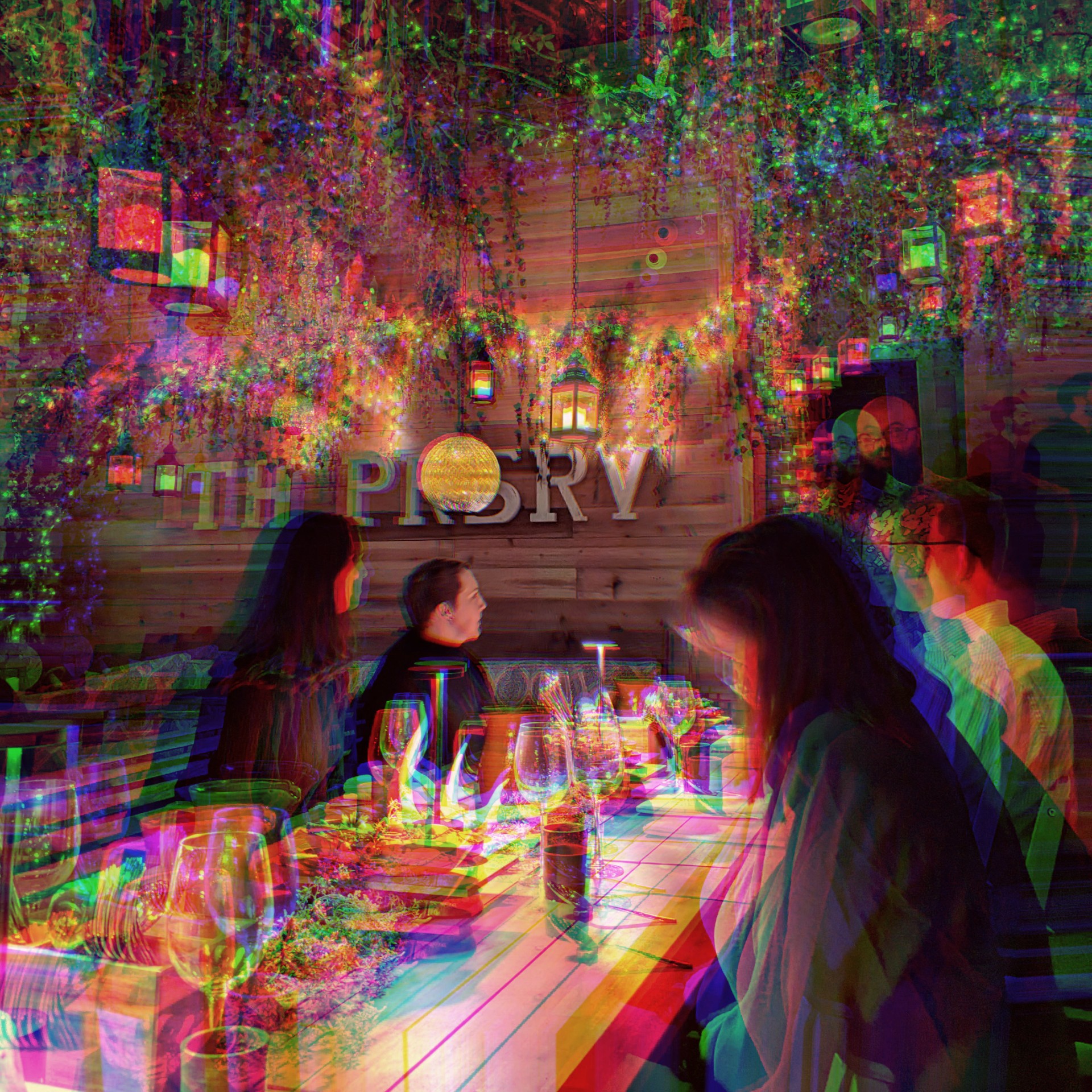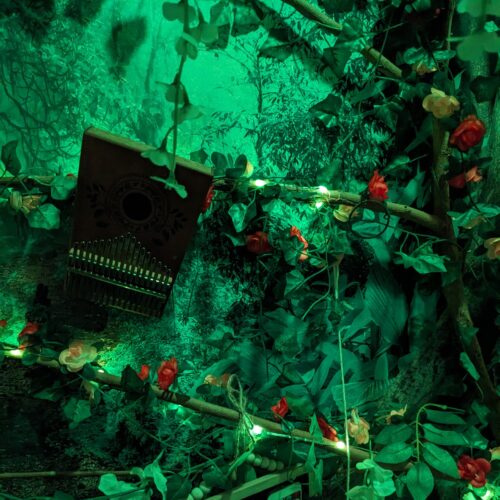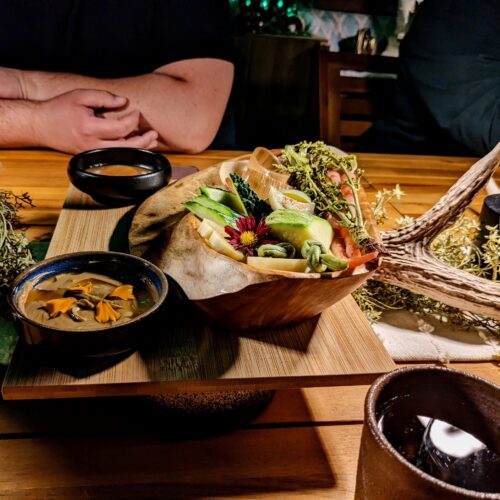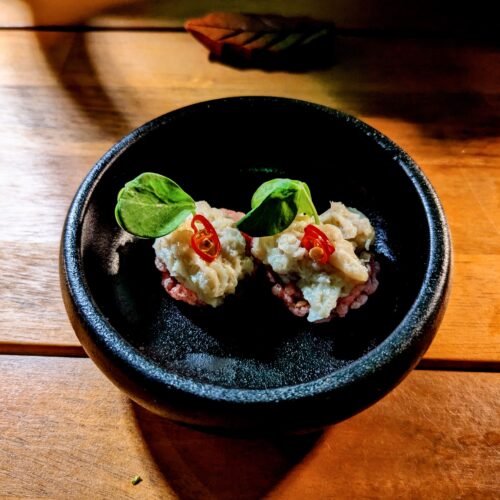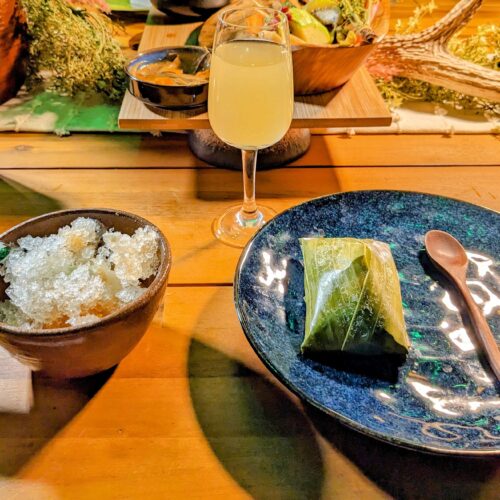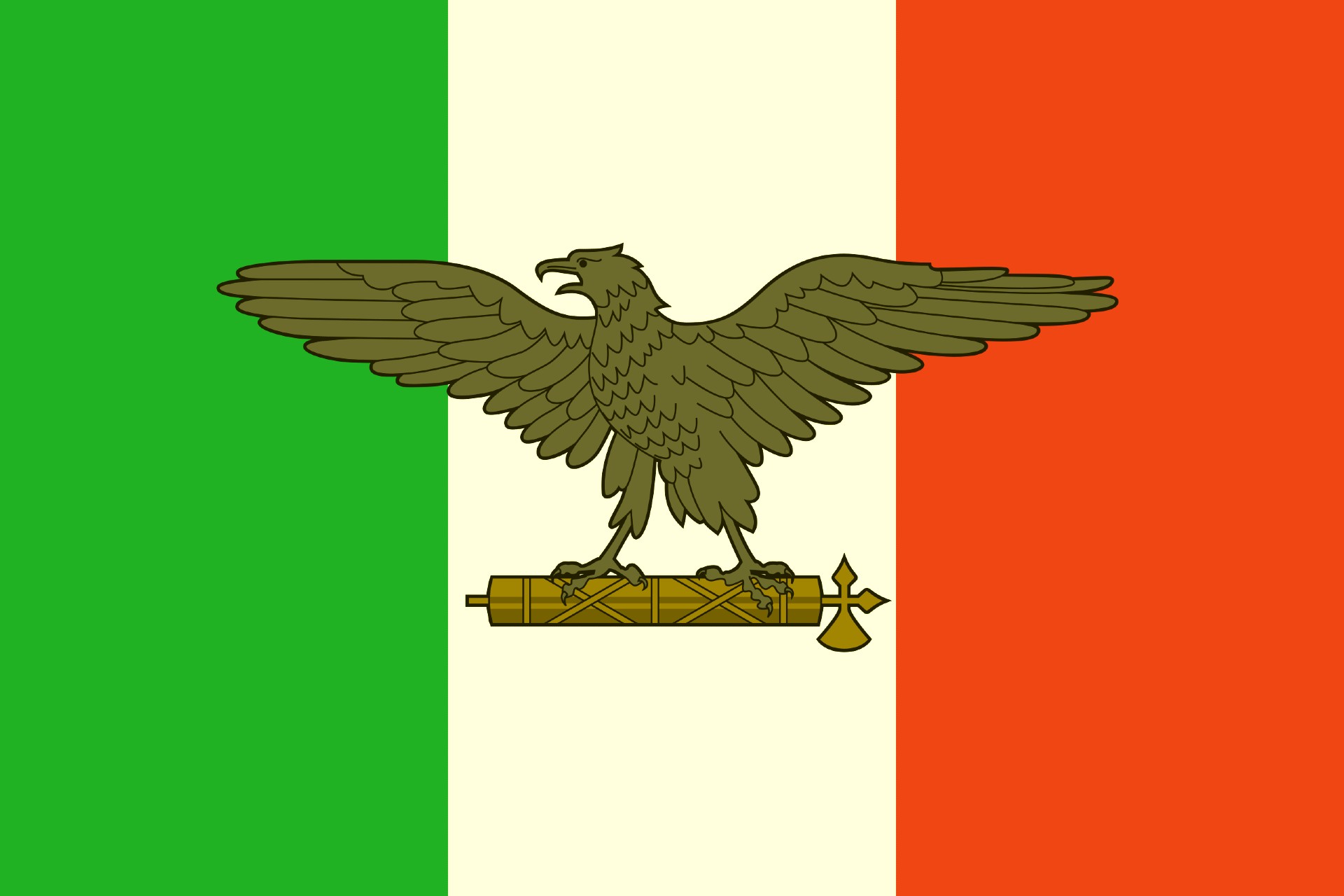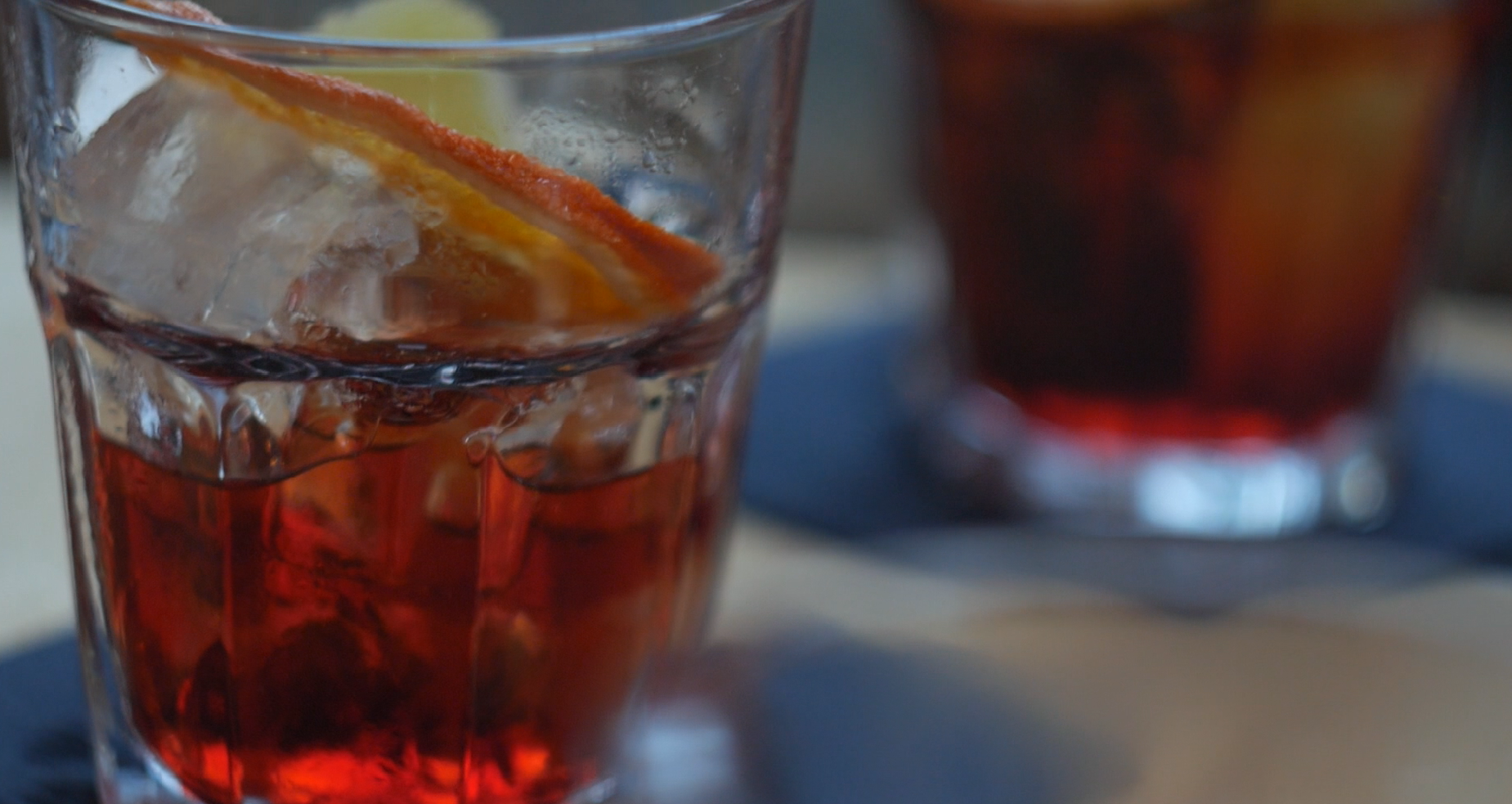Soft focus photos of sexy school girls dangle from the bar in what look like trading cards for fetishists. Unusually tiny, unshelled peanuts fondle the chopsticks under the neon light, and a Formula 1 driver mugs it hard on a calendar nailed to the door next to a replica jersey that spells out O-H-T-A-N-I.
With only one night in Kyoto, a city full of well-intending, well-groomed Chads and Logans who like to remind you that it is literally illegal to take photos of geishas without their consent, I have gone out of my way to find a Japanese bettola for your reading displeasure. Potentially translating to izakaya in Japanese—which after around 10 days in the country I somehow still do not speak—from another language, Italian—which after nearly 20 years of study I somehow still do not speak—a bettola is, for those who do not know, “a small, informal, and often inexpensive restaurant or tavern, or a seedy bar or dive.”
I will now share my failsafe, points-based system to help determind whether or not you’ve found a real bettola:
-
- The menus are handwritten (2 points).
-
- The menus are in a language you don’t understand (1 point).
-
- There are no pictures of food anywhere (1 point).
-
- None of the clients look, sound, act, or think like you (500 points).
-
- There is a way to get sufficiently soused for less than or equal to the price of a value meal at the local McDonald’s (no “Hobo” option? -2 points).
It’s this mentality that brought me to such a godforsaken place on the quasi-bland quasi-outskirts of this beautiful town. I could’ve gone to the brewpub emphatically recommended by my friend, a longtime Japanese resident and accomplished food blogger. I might’ve opted for that spot in the trendy neighborhood of Gion with its smoked wagyu, punk music, and stylish, evidently happy clientele, or the place near my guesthouse that’s been serving an all-eel omakase for over four centuries.
Instead, on my last night in Japan, my endless pursuit of “authentic experience” finds me gawking at the sequences of squiggles they call a menu while three the real-life school girls at the bar stare, giggling at my inability to understand why they’re giggling at me.
Getting shamed by the locals who are probably too young to even be in a bar: 3 points.
Stealing glances at my translation app, I muster up the confidence to order a hotto imojōchū—whatever the hell that is—and the masked man slicing salmon behind the bar raises his arms in celebration, as if I’ve finally unlocked some great code. Bottle-blonded, his age indeterminable, the bartender swings an arm around like a late career Elvis shooting fireballs from his pointer fingers, then shouts something that makes the girls laugh even harder, and soon enough I’m cradling a steaming mug of something that is, clearly and mercifully, alcohol.
“It’s my last night in Japan,” I say in remedial, over-loud English to no one in particular, then repeat it into my app for the bartender to see.
Looking me over with a wellspring of pity, he pours me a shot of Tokyo’s infamous Denki Bran—the stronger of two “electric” brandies, neither of which are brandies at all—then follows that with a bit of Hiroshima’s paint-stripping Sakurao Gin served with one perfect ice cube. “Number one,” he says with a wink, then meets the schoolgirls at the cash register to tally up their tab.
Bartender sharing free tastes of strange booze: 2 points.
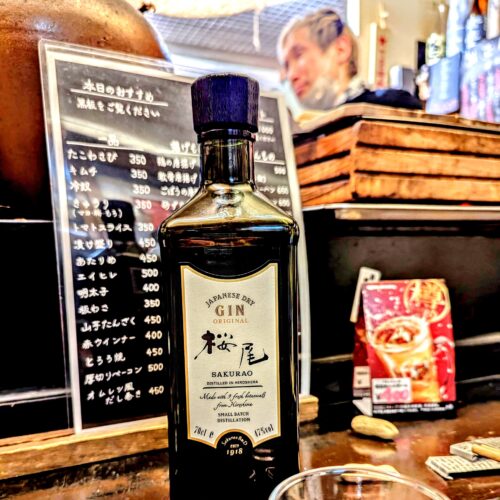
As if to spare us from being alone in the bar together, moments after the first group leaves, the front door swings open, and a new group of five shuffle in. The chef shouts something I don’t understand as a cordial couple takes the pair of stools to my left, bowing, followed by a pair of girls strapped into the kind of shiny pink gyaru gowns on display on the bar.
[Tangent from the Gyaru Wiki: Gyaru (ギャル?) is a Japanese transliteration of the English word ‘gal’. The name originated from a 1970s brand of jeans called “gurls”, with the advertising slogan: “I can’t live without men”, and was applied to fashion- and peer-conscious girls in their teens and early twenties. Its usage peaked in the 2000s and has gradually declined.]
The fifth entrant, wan and angular, sways back and forth as if on the high seas. Trailing one of the girls a little too close, he takes the seat directly opposite of mine, sprinkling ash from the stump of a dangling cigarette. Slowly, his eyes settle in, squinting at me through the neon, then widen in surprise. “Good morning!” he shouts with a laugh as the chef hands him a highball.
Funny and clearly rather depressive local drunk: 1 point.
“She normally works here,” the woman to my left says in a language I can understand, nodding to one of the gyaru girls. The girl, lighting a slender cigarette, makes a point to ignore the angular man, and it’s not clear to me whether he resents or enjoys such treatment. “Tonight,” says my neighbor, nodding to the same girl, “we celebrate her twenty-one years!”’
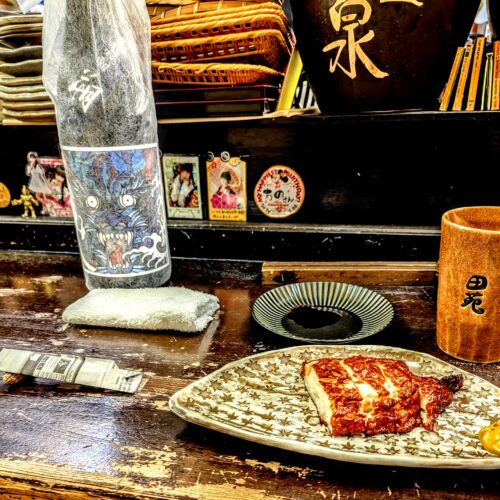
The bartender hands me a kamaboko, a lightly toasted fish cake with minced green onions served with spicy mustard, followed by a slate platter featuring four kinds of thick-cut sashimi and a flickering lantern which he’s carved from a daikon.
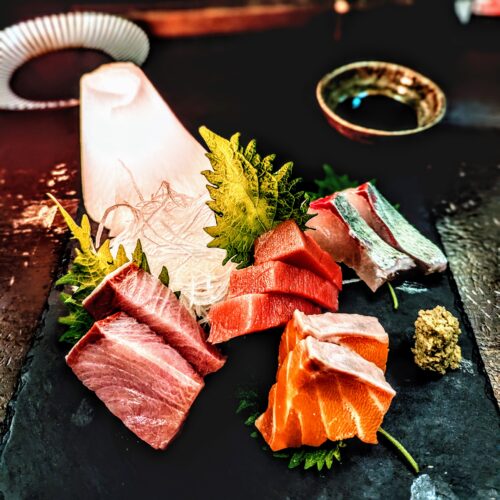
Excellent food presented with panache: 4 points for the quality food and -4 points for the quality presentation.
My neighbor is impressed by his work. She whispers something his way and he responds with a mournful word. “It’s your last night in Japan,” she tells me, as if I weren’t aware.
I shove a bit of kanpachi directly into my gob, and it is sweet and almost disturbingly tender. The fish cake is squeaky and gray, but filling and warm. I order another highball, the birthday girl orders another glass of what appears to be blueberry juice, and we all clink glasses. My neighbor insults her husband to his face, calling him broken-down, and he laughs, “yes, I am very old.”
Having fun: .5 points.
It seems the birthday gyaru is staring at me now, skirt hiked up, massaging her bare thigh with one hand and ashing her smoke with the other. My neighbor leans in. “Do you like Japanese women?”
I am now sufficiently soused.
As I’m busy stammering to death, the bartender presents a beautiful, fish-free cake—chocolate ganache with forest berries—and lights a daikon-free candle. Passing around the slices, the prime cut reserved for this absolutely discombobulated piece of shit, they all sing Happy Birthday To You in impeccable English.
Not knowing whether your experience is incomparably innocent or unspeakably filthy: 4.5 points.
The bartender shouts something, drumming on the bar, and everyone applauds, clinking their glasses of water and juice once more. “He wishes you a happy journey, and wants to thank you for coming to Japan,” my neighbor says, and my heart melts like sashimi in my chest.
I stand, tearing up, and tell them that even after such a short time, I feel forever changed by their country, that I will never forget their hospitality, and that I will miss each and every one of them. They respond in silence; only my neighbor understands, and I can tell from her face that I’ve overdone it. She eyes my empty glass. “Are you safe getting home?” She feels bad for me. I leave my money on the bar and leave as quickly as possible.
Final Score: Yes, it’s a bettola, alright.

Kokoro. 605-0951 Kyoto, Higashiyama Ward, Higashikawaracho, 696. Kyoto.

